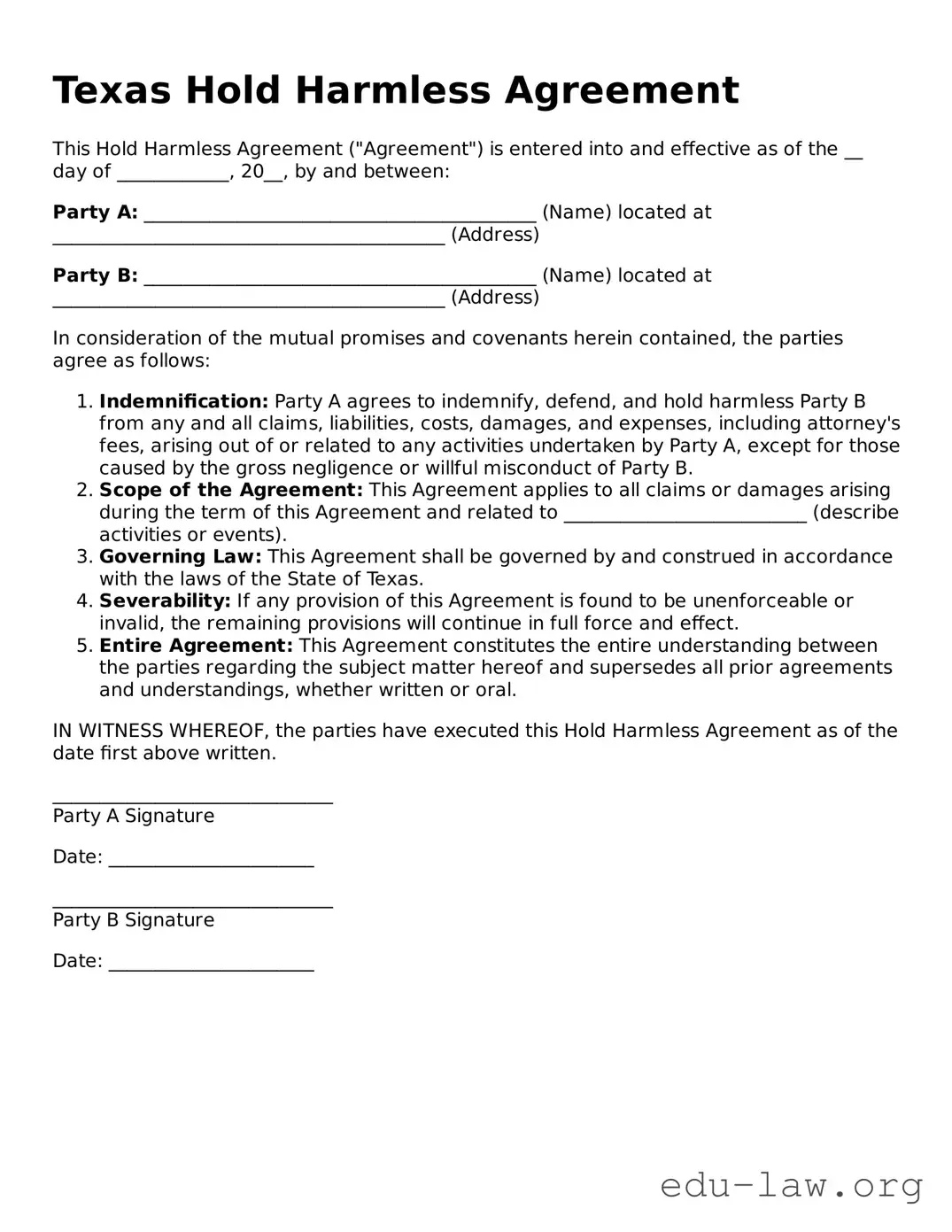Texas Hold Harmless Agreement
This Hold Harmless Agreement ("Agreement") is entered into and effective as of the __ day of ____________, 20__, by and between:
Party A: __________________________________________ (Name) located at __________________________________________ (Address)
Party B: __________________________________________ (Name) located at __________________________________________ (Address)
In consideration of the mutual promises and covenants herein contained, the parties agree as follows:
- Indemnification: Party A agrees to indemnify, defend, and hold harmless Party B from any and all claims, liabilities, costs, damages, and expenses, including attorney's fees, arising out of or related to any activities undertaken by Party A, except for those caused by the gross negligence or willful misconduct of Party B.
- Scope of the Agreement: This Agreement applies to all claims or damages arising during the term of this Agreement and related to __________________________ (describe activities or events).
- Governing Law: This Agreement shall be governed by and construed in accordance with the laws of the State of Texas.
- Severability: If any provision of this Agreement is found to be unenforceable or invalid, the remaining provisions will continue in full force and effect.
- Entire Agreement: This Agreement constitutes the entire understanding between the parties regarding the subject matter hereof and supersedes all prior agreements and understandings, whether written or oral.
IN WITNESS WHEREOF, the parties have executed this Hold Harmless Agreement as of the date first above written.
______________________________
Party A Signature
Date: ______________________
______________________________
Party B Signature
Date: ______________________
